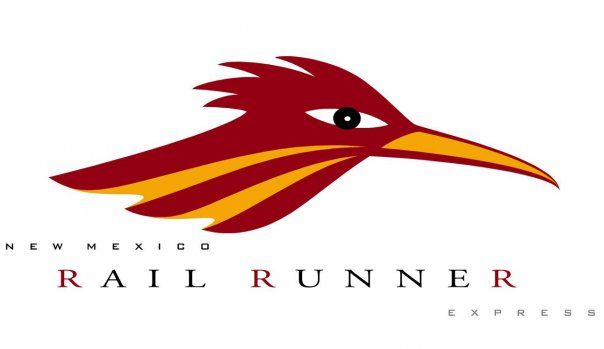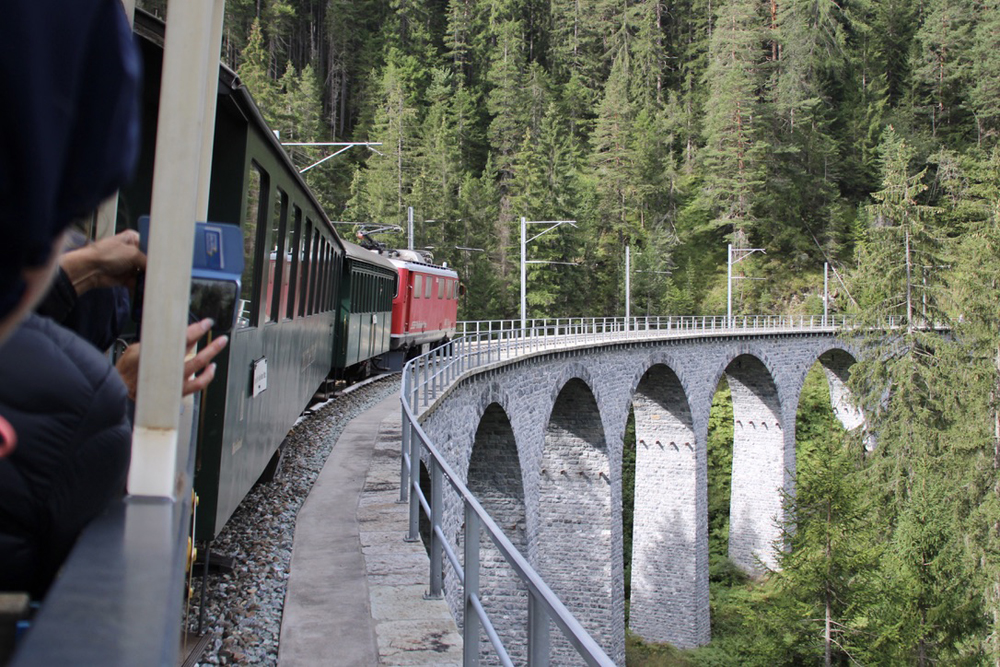ALBUQUERQUE, N.M. — New Mexico Rail Runner ridership continued to decline in fiscal 2018, marking its eighth straight year of decreases, and a report issued ahead of the start of the state legislative session suggests ways to stem the decline.
The Associated Press reports that the more than 750,000 rides in the most recent fiscal year represent a fall of 37 percent from the system’s peak of 1.2 million riders in fiscal 2010. The most recent figure is the lowest since the service was extended to Santa Fe, N.M., in 2008.
The state Legislative Finance Committee’s report suggests improvements in infrastructure and travel times, along with a moratorium on new stations, could help the commuter system. Surveys indicate that the public cites inconvenient schedules and long travel times as the most common reasons for not riding the train.
The 97-mile, 15-station commuter service runs from Santa Fe to Belen, N.M. On weekdays, it offers four round trips over its full distance, with three additional round trips between Albuquerque and Belen and four round trips from Albuquerque to Santa Fe.















Are the more stringent crash-worthiness standards in the US due to a belief that trains in the US are more likely to crash than trains in Europe or Asia, or because we are more cautious about the consequences of crashes that are more or less equally (un)likely everywhere?
Mister Landey:
Certainly. Budd did it. But at what cost? Is it worth a vendor setting up a production line, and how many units can they amortize the design and setup costs over?
I don’t know who owns the rights to the Budd design but I would be absolutely delighted to see those prints dusted off, brought up to current code, and then produced. But no DMU production will happen unless and until a vendor thinks he can make a profit, and one equal to or greater than, the profit he is currently making on the products he is already producing.
The above remarks are general in nature and do not form the basis for an attorney/client relationship. They do not constitute legal advice. I am not your attorney. Find your own damn lawyer.
Plenty of DMU’s that meet FRA crashworthy standards are available. For example from Bombardier and Stadler.
If a cab car (push in the push-pull mode) can be made crash-worth, so can a DMU.
Mister Clopton: That’s as may be (about DMUs). Unfortunately the only US vendor in recent history was Colorado Railcar and they went under. Their assets were sold to US Railcar but from I can tell it is simply a paper corporation and has yet to manufacture anything.
Of course I could be wrong about that, and I would be pleased to hear that they are actually building stuff.
One of the problems with a DMU in the US is the FRA crashworthiness standards. They are unique to North America (I think unique to the US although Canada may also use them) and this restricts the market to North America. DMUs are widely used elsewhere in the world but these units cannot be certified for us in the US, on rail lines which also have freight traffic.
I agree it would be nice if an FRA certified vendor would dedigitate and build DMUs…but it would also be nice if I had a hundred billion dollars too. We shall not discuss which has the higher probability of occurrence.
The above remarks are general in nature and do not form the basis for an attorney/client relationship. They do not constitute legal advice. I am not your attorney. Find your own damn lawyer.
I wish everybody in US passenger train circles would look more closely at DMUs. For some reason everybody insists on running locomotive-hauled trains. Agreed, they correspond more closely to what Americans think of as a “train”, but they are overkill for short-distance, lower-volume, higher-frequency services. DMUs are cheaper, lighter, and more versatile
Ana – Here is an example of a risk-averse society. I was at the trainer’s desk at my athletic club. An alarm rang out. All of the trainers ran to the staircase, one of them having grabbed the first aid kit on his way out.
What happened? Active shooter? Heart attack? Broken leg?
No. A child in day care had a minor scratch. Even if the day care worker had needed help or a second person to look at the child, or if she needed to contact the parent off the exercise floor, this was no emergency.
What’s my point? We live in a society that can’t handle the least adversity any more. I’m all for safe, crash-worthy trains. That’s legitimate. Most of what we worry about is bosh. That means nothing ever will get done.
Spread evenly between 365 days a year , it averages around 150 riders per trip. not too bad , but the size of the trains seems way too big for the ridership. Dmu’s would cut costs , and fuel use , and allow sizing of the trains to suit the service.
Mister Clopton:
It is hard to say, Sir. I don’t believe that trains in the US are more likely to crash than elsewhere, but we do have a risk-averse society here in North America, and this is reflected in the legislation that we get. A train wreck involving a passenger train is Big News and you see it splashed all over the television…what’s the old saw, “If it bleeds, it leads”? This sort of thing warps peoples’ perceptions concerning probability and risk.
In the nuclear industry it is a serious issue. Any kind of event at a nuclear generating station is instant news, no matter how minor (FILM AT ELEVEN!!!), and if you stay up that late you find that someone stubbed his toe in the switchyard. As a result we spend lots of money and effort designing and installing safety and monitoring equipment of sometimes dubious value, not because of its technical value but because it is mandated from on high.
So too in the passenger rail industry. People think that train wrecks happen on a regular basis, with release of poisonous materials and mass evacuations as a daily occurrence. Obviously then any incident, however minor, involving a passenger (rail) vehicle can only be accompanied by some horrific loss of life and wholesale maiming of women, children, and innocent bystanders.
As a species we are very poor at accurately gauging the risk of low-probability high-impact events. It is just the way we are wired.
We are, incidentally, equally poor at accurately gauging the payoff of low-probability high-return events, and this can be verified by talking to any casino operator anywhere. As the saying goes, Vegas wasn’t built by winners. It was built by losers.
And so, we get legislation intended to protect the travelling public from any conceivable threat, no matter how remote. The concept of ALARA (As Low As Reasonably Achievable) goes straight out the window, and we end up with standards which are at variance with those of the rest of the world.
I could go on about this…there was the infamous Ford Pinto memo, for example…every auto manufacturer does cost/benefit tradeoffs in their design, you have to. But would YOU want to be in the hot seat having to explain such a memo to an enraged jury? I thought not.
You can tell I’m bored. I wish this damn shutdown would end so I could get back to work. Andulusia swordfish and Ellis Island Green Beans for dinner tonight, dining car salad with Southern Pacific Dressing.
The above remarks are general in nature and do not form the basis for an attorney/client relationship. They do not constitute legal advice. I am not your attorney. Find your own damn lawyer.
The scheduling is a major issue. We travel to Santa Fe yearly and would ride Rail Runner more often if the timetable made more sense. It was, perhaps, overbuilt for the territory and population density. The horrid ABQ station is also an issue. The platforms are fine, but much of it simply makes you feel unsafe.
Constant threats by the former Martinez administration to shut the Rail Runner down can not have helped, nor the service/frequency cuts her administration imposed.
It’s sad to see this one fail. A noble attempt for sure. Did anyone really in their heart have much hope? The local authority fielded a fair number of trains considering the population, but in reality not quite enough frequency for a commuter route.
Anna: You are right. This is a fact that, despite having decades to proclaim, just can’t gain traction with the public. I blame years of ineffective passenger advocacy.
I totally agree with your analysis Anna. There are hidden costs to every form of public transportation, but the public for the most part does not see those costs. There are services which need to be provided for the general good of the community and environment.
Even if a service does not pay for itself in fare-box receipts (hint – few if any do) there are other social goods which result from such a service – fuel conservation, remedying congestion, mitigation pollution, to name a few. The structure of the North American passenger transportation system is biased toward automobiles and passenger aircraft. However neither the motorist-on-the-street nor the passenger-in-the-sky pays the true cost of the trip.
Some of this cost is picked up in the form of fees and grants for such things as airports, roadways, traffic control systems and the like, and is redistributed to the population at large in the form of taxes and levies on associated goods.
But all this is transparent to John Q. Motorist-Flyer.
If the operators of the Rail Runner want the service to operate as a net positive social good they need to listen to their customer base. Scheduling needs to be convenient, the price needs to be competitive with the (apparent) cost of driving, and the stations need to have ample parking and be reasonably safe to patronize. In other words, it needs to be an attractive, and competitive good or it will not survive.
There is no more assured way to kill a service than to make it inconvenient to use.
The above comments are general in nature and do not form the basis for an attorney/client relationship. They do not constitute legal advice. I am not your attorney. Find your own damn lawyer.